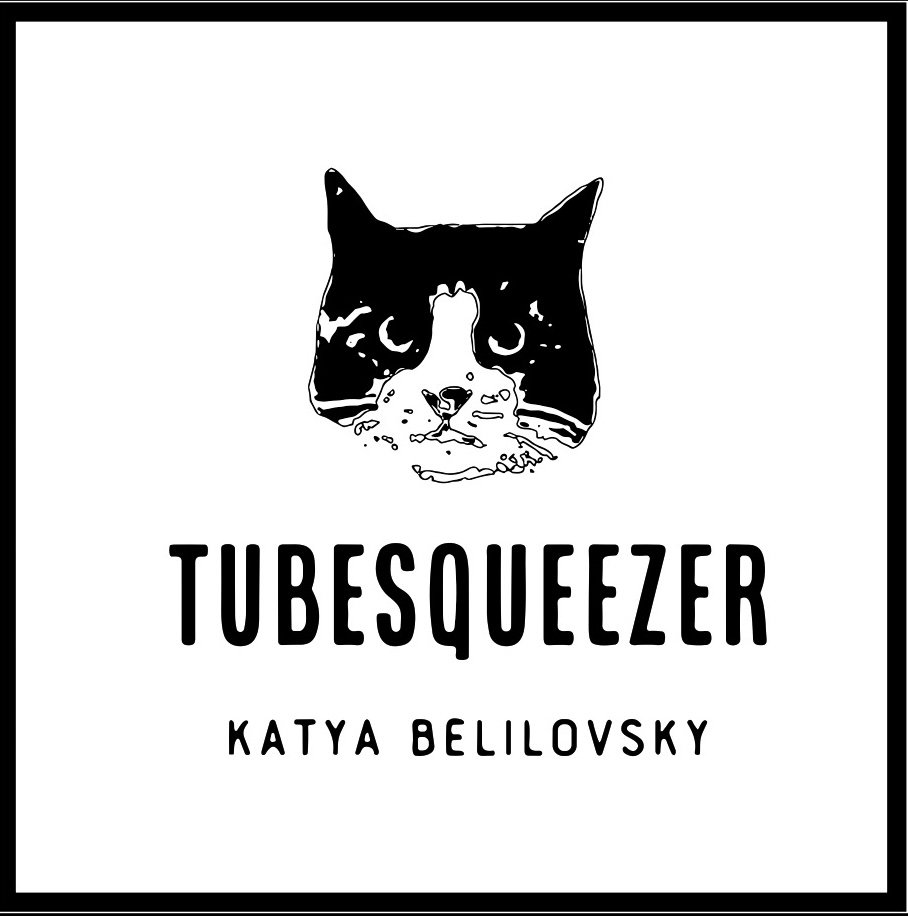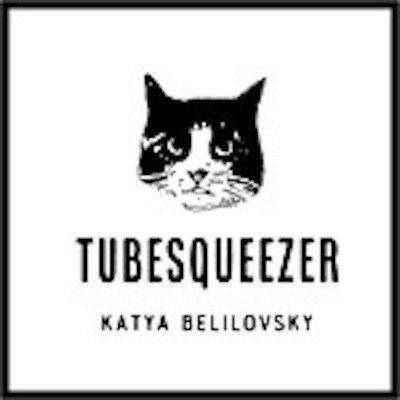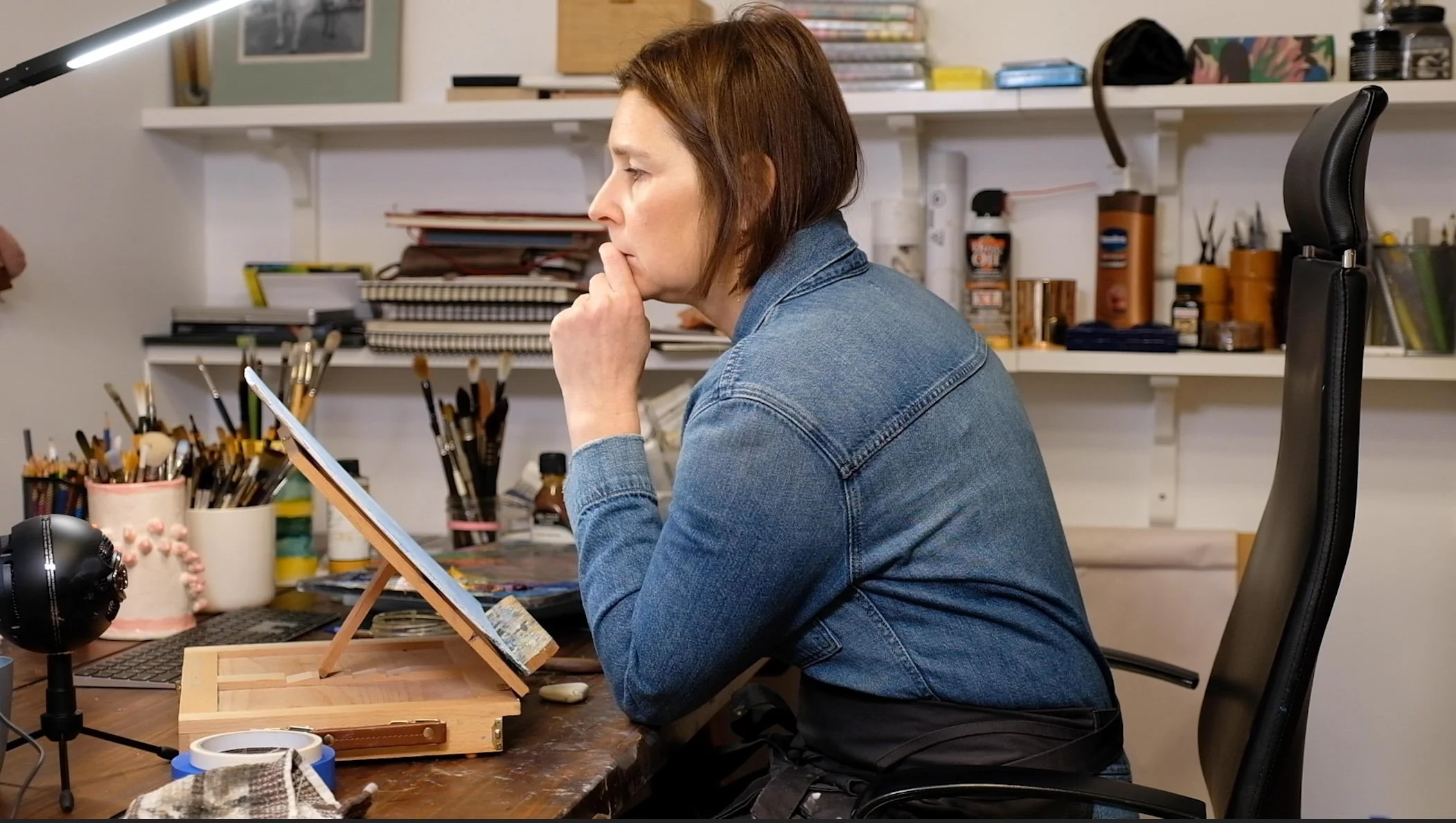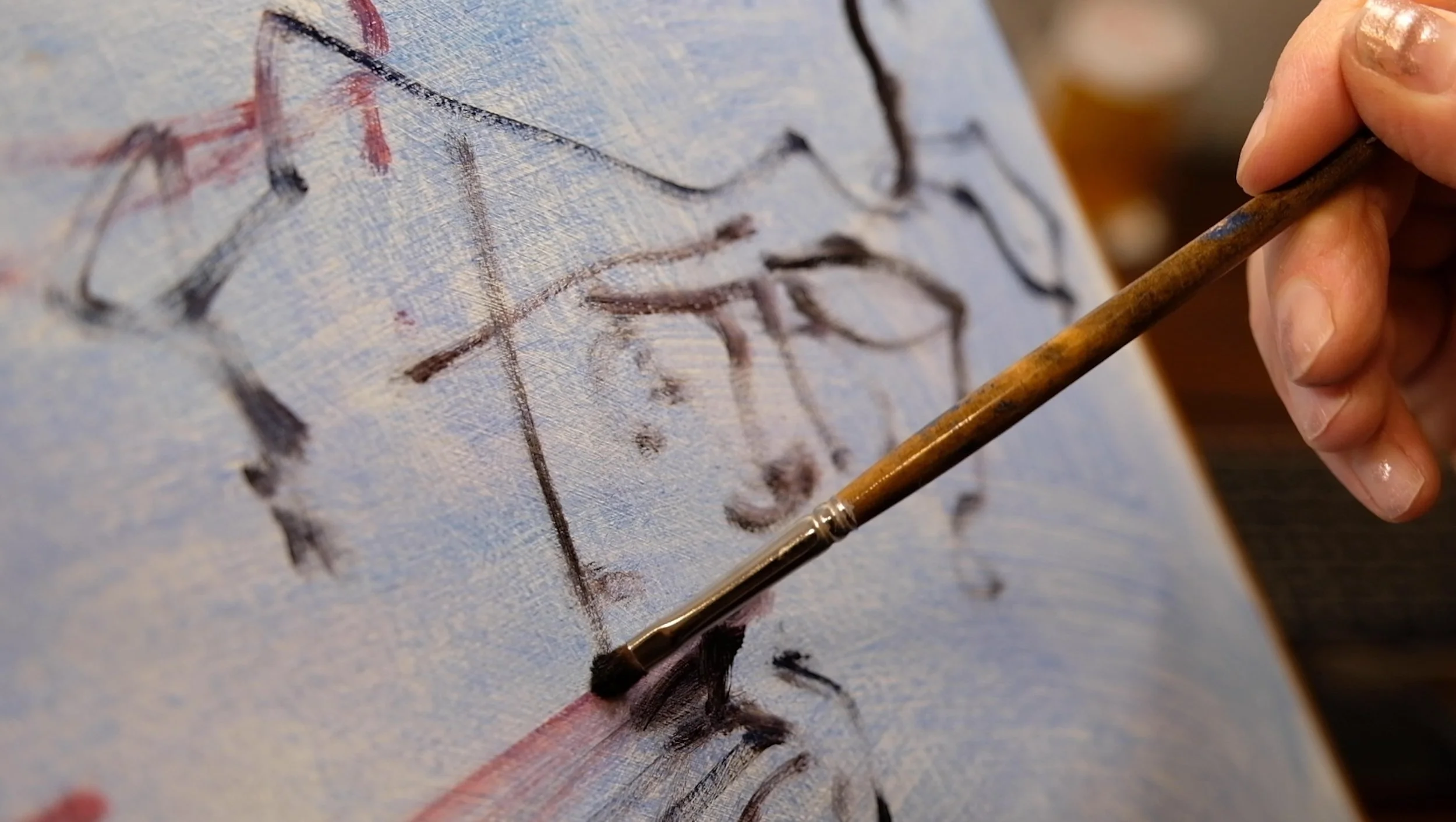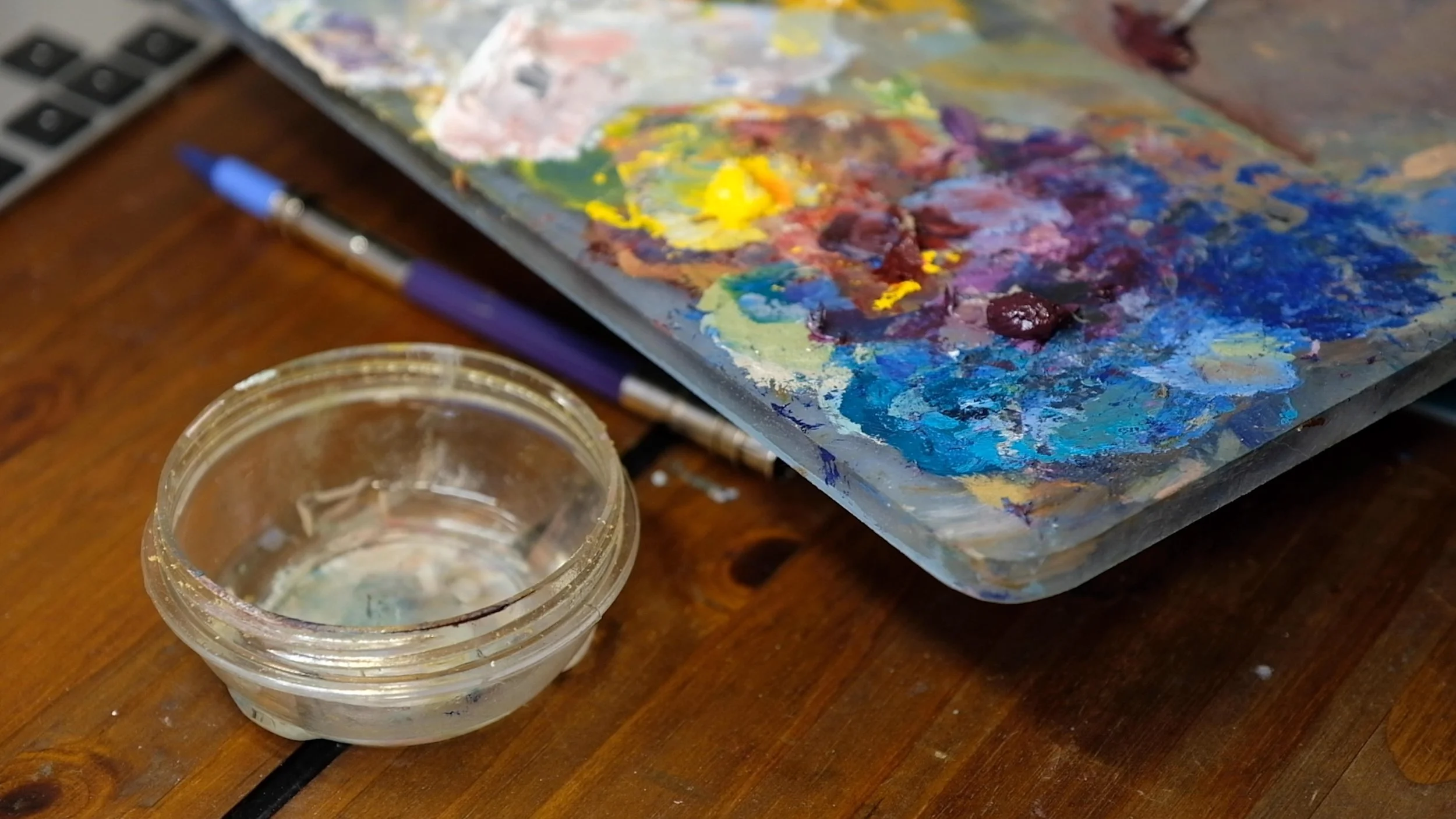my artistic process
Technical side
The way I paint has evolved significantly over the years. I was taught to build up paintings in layers starting with underpainting over the refined drawing. I soon realized that I’m a more spontaneous painter by nature and started experimenting with different approaches to painting. Now my preferred technique is “alla prima” where paint is applied directly to a surface and the painting is finished in one or two sittings. This method keeps me engaged from start to finish and I find there’s no boring stage throughout. With every brushstroke, the painting keeps evolving and acquiring new details and time ceases to exist. Even though I rarely spend only one day on a painting, those rare “one-day wonders” provide me with a big emotional boost, instilling me with a lasting sense of excitement.
Day after day I usually circle back to look over a painting and decide when it’s done. Some paintings end up in a weird in-between place and never get finished or painted over—they kind of just hang out, hoping to be rediscovered. The ones that survive my intuitive assessments get some tweaks. It is these that end up being shown to people. Some end up in a “paint over” pile, which I’ve learned to value because they have taught me tough lessons.
When I first started painting years ago, I hoped that every painting I began would one day turn out to be perfect. But now I know that the mistakes are just as important as the triumphs. Every failed canvas had hours of pondering and solution-seeking attempt put into it. Sometimes I can’t tell what the lesson was but nevertheless, I come to enjoy occasional do-over painting as a reminder to keep myself moving forward and be open for a challenge. Having no limits on my creativity is what my art is all about—always evolving as I am always learning.
Creative Side
So where do all these images come from?
Every picture tells a story. The paintings I want to paint always have an open end, with the story continuously evolving in the eye of the observer. Threads of impersonal memories and forgotten fables, childhood nightmares and heightened delights from the past — these are the elements I’m trying to trap and mesh together. The final result becomes an imaginative tapestry I can bounce off of freely landing onto different parts, either snuggling into it or swiftly pivoting to an opposite and less dangerous corner.
Eventually, in my mind, a smirky image develops. It comes with a caption that has qualities that are almost non-descriptive, and are simply just essences, like “a girl with a big crow on her shoulder”. I first make a few sketches to figure out how to place it all on the canvas. Sometimes I search online for images that inspire me or create a rough concept in Photoshop. With this, I end up with a “visual map” of a painting and hope it turns out well.
My previous experience working as a photographer has taught me that it is hard to take existing photos and turn them into paintings. Some photos are impossible to paint, but I still employ them as references for things like body movement and facial expressions. When I use photos as references, I try to maintain a sense of distance to avoid copying them exactly. I want to create something in a different artistic dimension, which is unbounded to any particular image. A work of art that is completely free.
